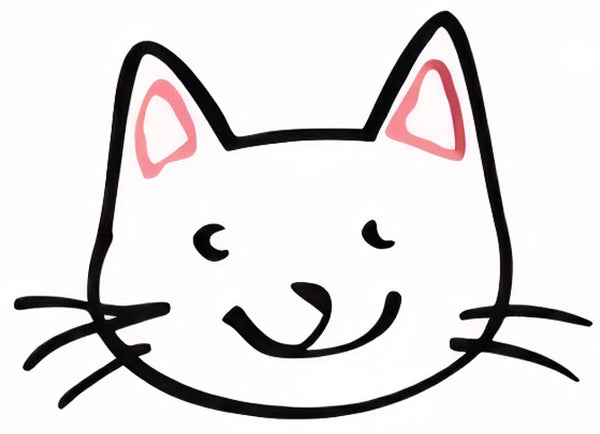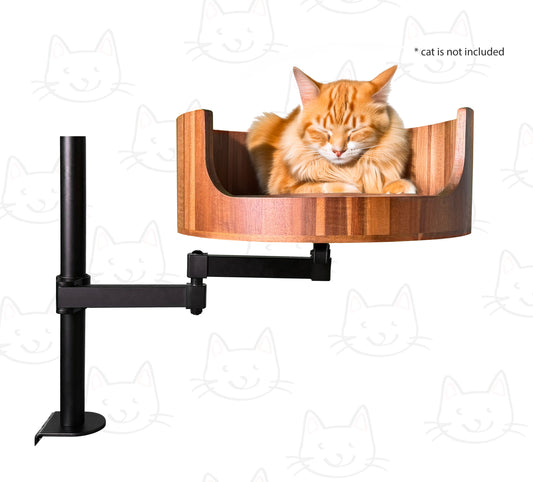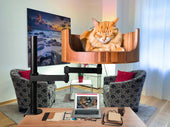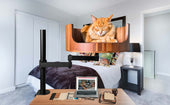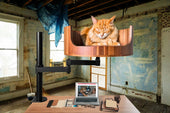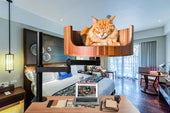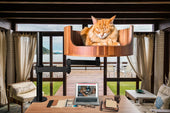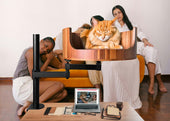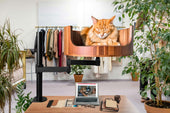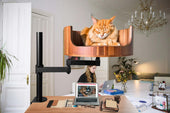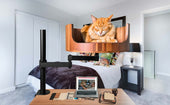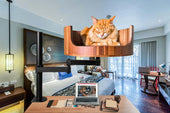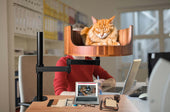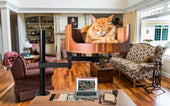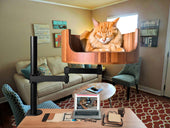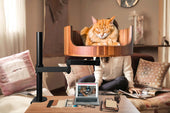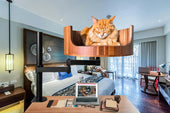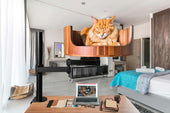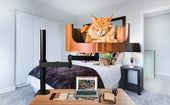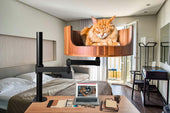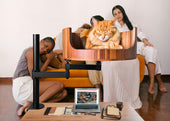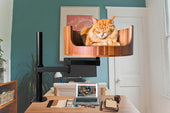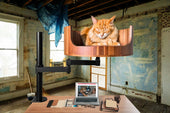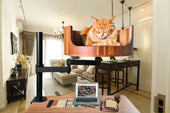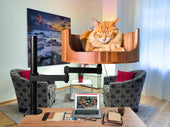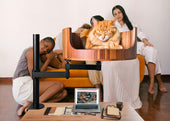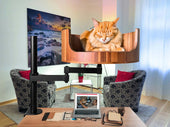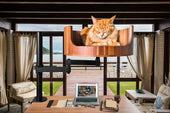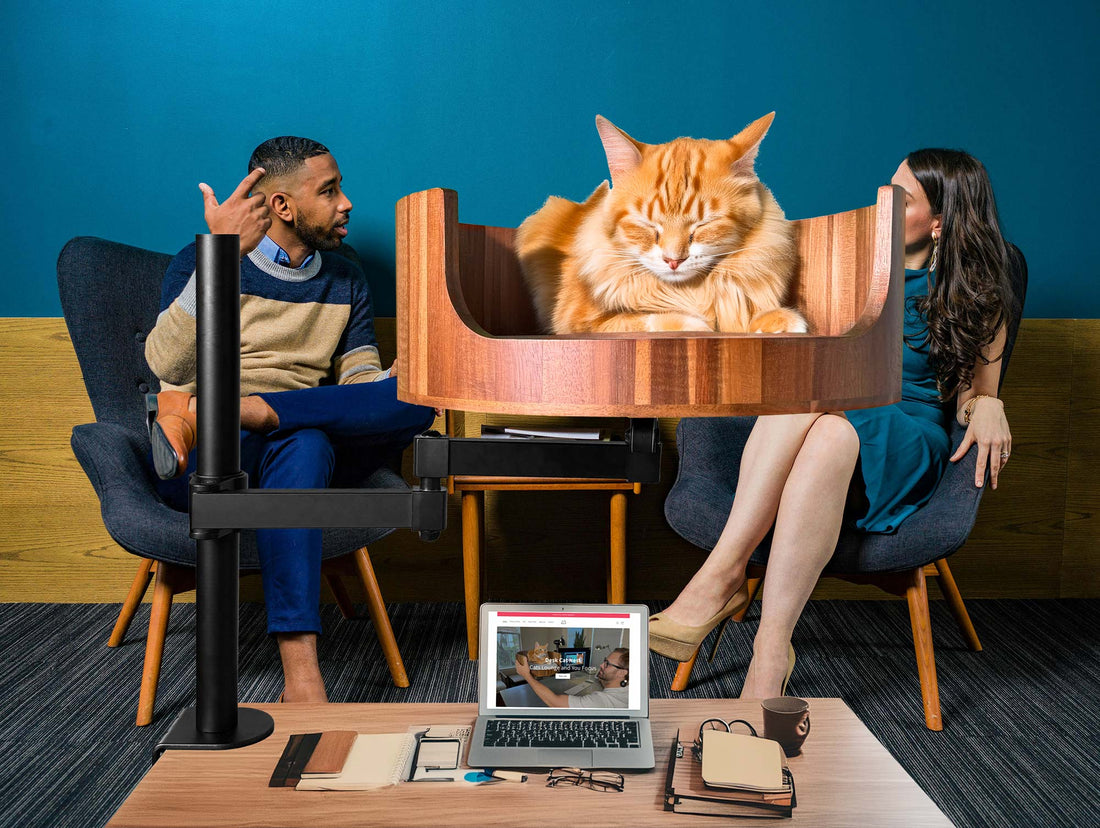
Cat Tail Emotions: Understanding Feline Body Language
Share
Have you ever wondered what your cat is trying to communicate through its tail movements? Cats use their tails to express a wide range of emotions, from happiness to fear, and understanding these signals can greatly improve your relationship with your feline friend. In this article, we will explore the different meanings behind various tail movements and gestures that cats use to communicate their feelings.
From the subtle flick of a tail tip to the vigorous swish of a fully fluffed tail, each movement conveys a specific message about your cat's current mood and intentions. By learning to interpret these signals, you can better anticipate your cat's needs and respond appropriately to ensure a harmonious relationship. Whether your cat is content and relaxed or feeling anxious and agitated, its tail can provide valuable insight into its emotional state. Join us as we delve into the fascinating world of feline body language and uncover the secrets behind your cat's tail emotions. Understanding these subtle cues can help strengthen your bond with your furry companion and ensure that you provide the best possible care and support for your beloved pet.
1. Tail positioning is crucial in understanding a cat's emotions, with a high and curved tail indicating confidence and happiness, while a low and puffed-up tail signifies fear or aggression.
2. Twitching or lashing of the tail can indicate irritation or excitement, so it's important to pay attention to these movements when interacting with your cat.
3. The speed and direction of a cat's tail movements can provide insight into their current mood and how they are feeling in a particular situation.
4. Cats use their tails to communicate with humans and other animals, making it essential to interpret their body language correctly to build a strong bond.
5. By observing and recognizing the different tail postures and movements of your cat, you can better cater to their emotional needs and create a harmonious environment for both of you.
Understanding Feline Body Language
Cats communicate their emotions primarily through their body language, and one key aspect of this is their tail movements. A cat's tail can signal a wide range of emotions, from happiness to fear, aggression to contentment. Understanding the various tail positions and movements can help pet owners better interpret their cat's feelings and respond accordingly.
Happy Cat Tails
When a cat is feeling happy and content, their tail will typically be held upright with a slight curve at the tip. This position signifies a relaxed and comfortable cat, who is likely feeling confident and at ease in their environment. Cats may also exhibit a gentle swishing motion when they are feeling content, such as when they are being petted or receiving attention from their owner.
Anxious or Fearful Cat Tails
On the other hand, a cat with an anxious or fearful temperament may hold their tail low to the ground, close to their body. This position can indicate that the cat is feeling scared or stressed, and may be preparing to flee or defend itself. Cats may also puff up their tail to make themselves appear larger when they feel threatened, similar to a defensive mechanism.
Aggressive Cat Tails
Aggression in cats is often signaled by a stiff, puffed-up tail, with the hair on the tail standing on end. This aggressive stance is usually accompanied by other aggressive body language cues, such as hissing, arched back, and flattened ears. It's important to give an aggressive cat space and not provoke them further, as they may lash out in defense.
Conclusion
Feline body language, particularly tail movements, is an essential tool for understanding and communicating with our feline companions. By observing and interpreting our cat's tail positions and movements, we can better respond to their emotional needs and create a harmonious relationship with them. Remember to be patient and attentive to your cat's cues, and always respect their boundaries and comfort levels.
Frequently Asked Questions
What are cat tail emotions and how does the Desk Cat Nest help with them?
Cat tail emotions refer to the various ways in which a cat expresses its feelings through its tail movements. The Desk Cat Nest provides a cozy and secure space for your cat to relax and unwind, which can help reduce stress and anxiety that may manifest in their tail movements.
Is the Desk Cat Nest suitable for all sizes and breeds of cats?
Yes, the Desk Cat Nest is designed to accommodate cats of all sizes and breeds. The spacious design ensures that your cat has plenty of room to stretch out and get comfortable.
How do I introduce my cat to the Desk Cat Nest?
It's best to place the Desk Cat Nest in a quiet and familiar environment for your cat. You can encourage them to explore the nest by placing some of their favorite toys or treats inside. It may take some time for your cat to warm up to the new space, so be patient and give them time to adjust.
Can the Desk Cat Nest be easily cleaned?
Yes, the Desk Cat Nest is made with removable and washable materials, making it easy to keep clean and maintain. Simply remove the cover and wash it according to the care instructions provided.
Will the Desk Cat Nest help with my cat's overall well-being?
While the Desk Cat Nest is not a substitute for proper veterinary care, providing your cat with a comfortable and secure space to relax can have a positive impact on their overall well-being. It can help reduce stress and anxiety, promote better sleep, and improve their overall mood and behavior.
In conclusion, the Desk Cat Bed is a valuable choice for helping with cat tail emotions. By providing a comfortable and cozy space for your feline friend to relax and feel safe, this product can help reduce stress and anxiety, leading to a happier and more contented cat. The elevated position of the bed allows cats to observe their surroundings and feel secure, while the soft cushioning provides a sense of comfort and security. Investing in a Desk Cat Bed can not only improve your cat's emotional well-being, but also enhance the overall bond between you and your beloved pet.
